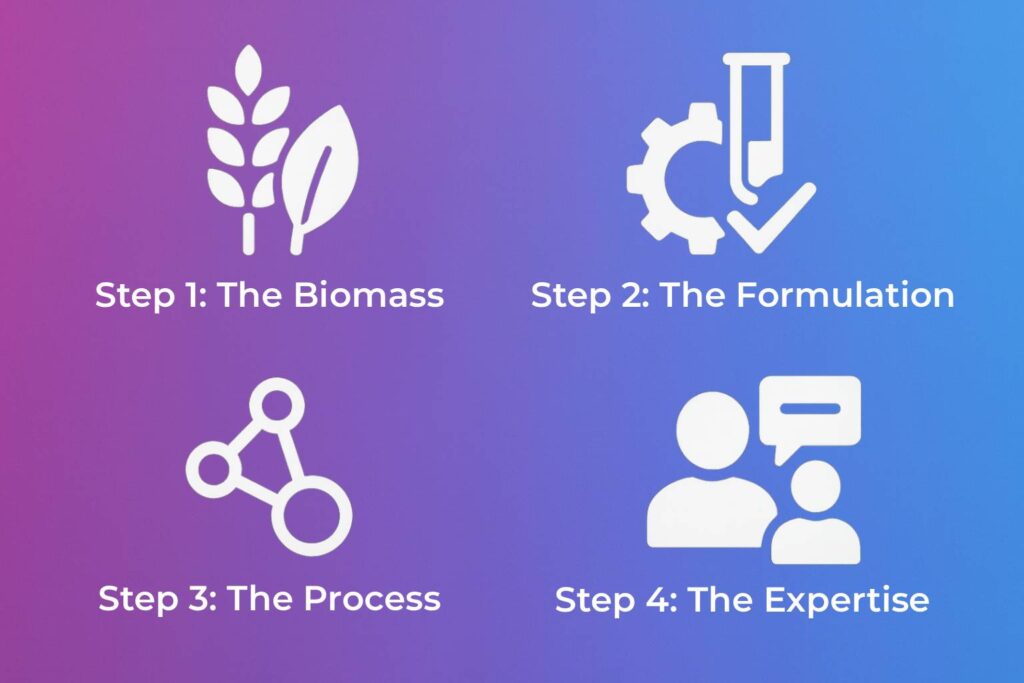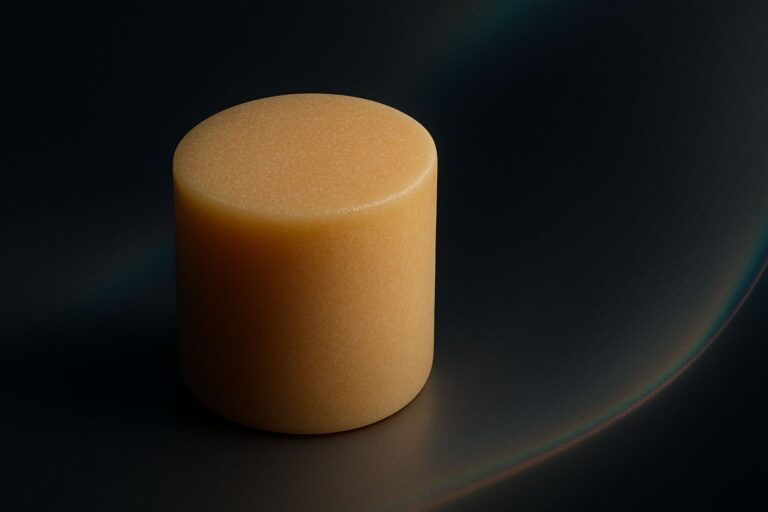
The Manufacturer's Playbook: How to Implement Carbon-Negative Materials
Meeting sustainability targets is no longer optional. Consumers demand it, regulations require it, and the planet needs it. But for product manufacturers, the path forward can seem complex. How do you move beyond vague promises of “eco-friendly” to creating products that are verifiably carbon-negative?
This is your practical, step-by-step playbook.
We’ll move beyond simple definitions and show you the real-world process of implementing carbon-negative materials—from selecting the right biomass to engineering for performance and scaling up production. This is where sustainability meets industrial reality.
The Four Steps to Carbon-Negative Manufacturing:
Step 1: Select Your Carbon Source (The Biomass)
Step 2: Engineer for Performance (The Formulation)
Step 3: Choose Your Integration Pathway (The Process)
Step 4: Partner for Scale (The Expertise)

Step 1: Select Your Carbon Source (The Biomass)
Every carbon-negative material begins with biogenic carbon—the CO₂ captured and stored by plants. The type of biomass you use is the first and most critical choice, as it dictates the baseline properties of your final material. At Biomera, we see biomass not as filler, but as a portfolio of performance additives:
- For Strength & Rigidity: Fibers from sugarcane bagasse or wood provide excellent structural integrity, ideal for durable housings and components.
- For Hardness & Durability: The high silica content in rice husks creates a tough, scratch-resistant surface, perfect for high-wear products.
- For Lightweighting & Aesthetics: Byproducts like coffee grounds can reduce weight while creating a unique, speckled finish for design-focused items.
- For Flexibility & Specialized Properties: Algae-derived feedstocks offer unique possibilities for creating more pliable compounds and specialized films.
Choosing the right biomass—or more often, the right blend of biomass—is the foundation of a high-performance material.
Step 2: Engineer for Performance (The Formulation)
This is where true material science comes in. Raw biomass rarely works as a simple drop-in. It must be scientifically formulated to meet the demanding requirements of modern manufacturing.
This is the core of the Biomera platform. With a library of over 6,500 proven formulations, we have mastered the science of turning raw biomass into industrial-grade materials. The formulation process involves:
- Particle Size Optimization: Milling fibers to the precise size for optimal flow and strength.
- Synergistic Blending: Combining different biomass types to create a compound with superior properties.
- Compatibilization: Ensuring the biomass properly bonds with binding agents for a homogenous, high-strength final part.
A successful formulation turns a sustainable concept into a manufacturable reality, ensuring your final product is not only carbon-negative but also strong, beautiful, and built to last.
Step 3: Choose Your Integration Pathway (The Process)
Once you have an engineered material, how do you integrate it into your production line? There are two primary pathways, depending on your goals.
Pathway A: The Full Replacement (for New Products)
This pathway involves using a complete, ready-to-use biocomposite material. It’s the ideal choice when designing a new product from the ground up or when aiming for the highest possible sustainability credentials, such as a “plastic-free material” claim.
- Our Solution: Biomera’s Biocomposite Granules. We provide a turnkey material from our library of 6,500+ recipes, optimized for your process (injection molding or extrusion). You simply substitute it for your traditional plastic.
Pathway B: The Enhancement (for Existing Products)
This pathway involves enhancing your current material stream with a concentrated carbon-negative additive. It’s the fastest and most flexible way to decarbonize an existing product line without completely overhauling your supply chain.
- Our Solution: Biomera’s Custom Masterbatches. We design a concentrated pellet that you blend at a low ratio (e.g., 10-20%) with your existing polymer. This turns a standard product into a “carbon-negative plastic” part with minimal disruption.
Step 4: Partner for Scale (The Expertise)
Successfully implementing carbon-negative materials at scale requires more than just a supplier; it requires a science-led partner.
At Biomera, we work directly with your engineering and design teams to:
Define your exact performance and sustainability targets.
Select or create the perfect formulation.
Provide material data for simulations (e.g., Moldflow).
Help you dial in processing parameters for optimal cycle times and quality.
Supply the data needed for your Life Cycle Assessments (LCAs).
This partnership model de-risks the transition and ensures your launch is a success.
Frequently Asked Questions (FAQ)
What is the difference between a biocomposite and a masterbatch?
A biocomposite is a complete, ready-to-use material intended to be the primary component of your product. A masterbatch is a concentrated additive that you mix into your existing plastic to enhance its properties and lower its carbon footprint.
What is the single most important characteristic of a carbon-negative material?
The single most important characteristic is its Life Cycle Assessment (LCA). A true carbon-negative material must prove that it sequesters more atmospheric CO₂ throughout its entire lifecycle—from raw material sourcing to manufacturing and end-of-life—than it emits.
Can I get a material that is both carbon-negative and traditional plastic-free?
Absolutely. Our Biocomposite pathway is specifically designed for this. We offer numerous formulations with exceptionally high biomass content, combined with biopolymers that are free from traditional plastics. Additionally, we are actively developing our next-generation material: a 100% plastic-free compound that remains fully compatible with standard injection molding.
How does formulation affect performance?
Dramatically. A well-formulated biocomposite using rice husks can be far more durable than a poorly formulated one using stronger wood fibers. The science is in how the ingredients are processed and blended. With over 6,500 recipes, we have the data to prove which formulations work best for each application.
What kind of data do you provide to support sustainability claims?
We provide detailed data on the bio-based content, the specific waste streams utilized, and the calculated carbon sequestration factor for our materials, giving you the verifiable information you need to make credible carbon-negative or carbon-reduced claims.
About Biomera
This guide was written by the material scientists and engineers at Biomera. Our mission is to decarbonize the manufacturing industry by providing scalable, high-performance, carbon-negative material solutions. We are not just suppliers; we are your end-to-end partners in creating the restorative products of the future.

